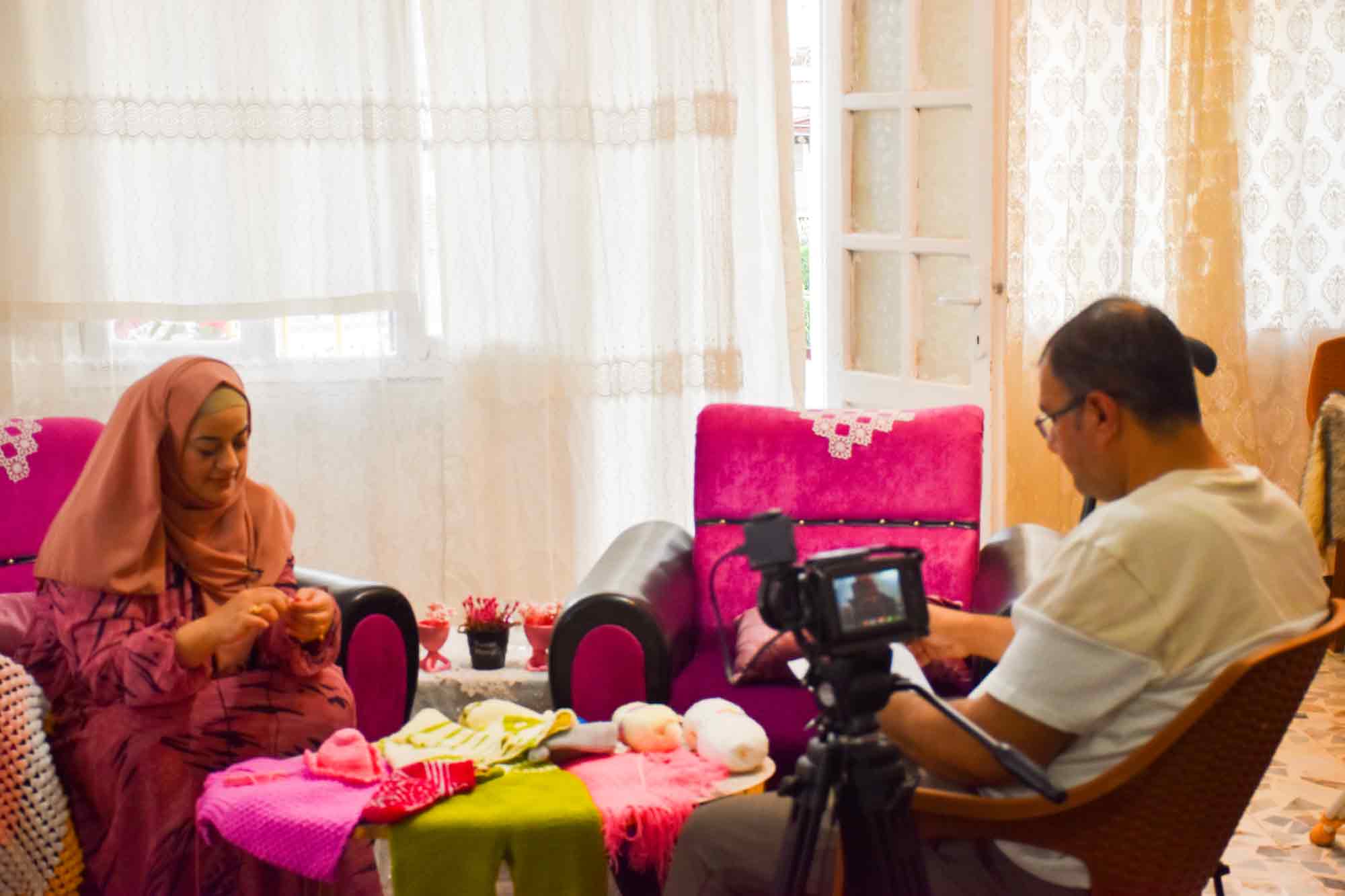By: Hassan Ali
Translation: Yousef Awad
Knitting with a traditional hook, also known as crochet, a word of French origin, appears to have spread this craft from France to other countries. This craft can be defined as knitting or winding the thread with small needles, which are special needles with a hooked shape typically called a crochet hook. The fabric knitted by crocheting is called crochet. The threads used are diverse, and the materials vary from cotton to wool, silk, and others.
In Palmyra, the knitting of woolen clothing with locally available wool threads has been widespread for decades. Some have considered it a profession for earning a livelihood, while others have learned it as a hobby to fill their leisure time with something entertaining and useful. After the displacement in 2015, this craft also moved with them to the diaspora countries because the residents of Palmyra prefer hand-knitted woolen clothes over ready-made ones, especially for children, as they are considered warmer and last longer than ready-made clothes, providing some income for the head of the family.
Mrs. Rawaa Al-Fares, 33 years old from Palmyra, who works in the craft of wool knitting with a crochet hook, speaks about the practice and activities of this profession in Palmyra. She says, “I learned this profession from my mother and grandmother in Palmyra. When we were displaced to Turkey, I improved my profession by taking courses at the Turkish Red Crescent and added new knowledge to my expertise to master this profession even more. Then, I worked as a trainer for this craft at the Taiwanese Center here in Reyhanli city.
The tools required for this profession are one or two crochet hooks, and each type of hook has its own sizes and may be made of metal, wood, or hardened plastic. The wool threads, which come in different thicknesses and colors, include types such as natural wool threads, twisted wool threads, and wool threads blended with cotton. Each type is used according to the required product, and we need a needle and scissors, and sometimes we may need accessory pieces for decoration. Sometimes, I make the accessories with wool threads on the hook to add beauty to the products I produce.”
As for the method of wool knitting, it begins by making a knot (stitch) on the hook, then pulling a loop to form another knot connected to the first one, and thus all the knots are formed in a single row. Either the chain is flipped and executed in rows, or it is connected to the beginning of the row with a slip stitch and executed in circles. Circles can also be made by working many stitches inside a single loop. For example, if I wanted to work on a small piece like this hat on one hook or two, the method of work does not differ much between them. I make a row of about 12 stitches, then return to the first stitch I worked in the row to move on to the following row, and I must pay close attention to counting during work so as not to make a mistake, because in case of an error, the stitches must be repeated and the work started over. If I work in a circular fashion, every time I move to two rows and the third, I must increase the number of stitches; usually, I add two stitches every three new rows until I reach the last row, which has the widest circumference in the circle, and then I have finished making the hat. After cutting the thread from the hook, we may add decorative accessories as desired, making it ready for sale. The stitches have types: one with a single twist, one with two twists, one called a popcorn stitch, and one called a filling stitch.
The most important traditional products in Palmyra are clothing such as sweaters, trousers, shawls, socks, caps, gloves, and overalls clothes for children. In the country of displacement, we developed the production where we started to produce toys and models to which we added accessories and covers for tables and others. The income from this profession is not satisfactory, because if you wanted to produce a children’s sweater, for example, you would need three days of work, and when selling, it does not sell for more than five dollars. So, I suggest that there be an export market for the crafted pieces to Europe and the wealthy countries.”



1 Comments
great story. thanks for giving our voice a chance to make the world hear us
Comments are closed.